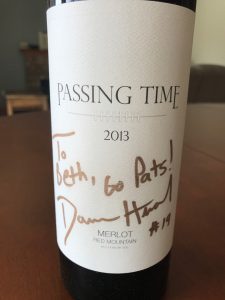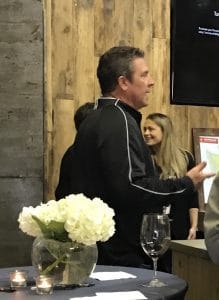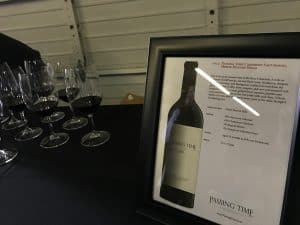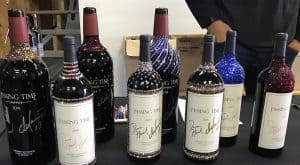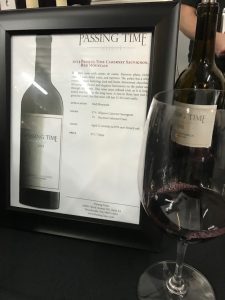
Here is what I’m reading today in the world of wine.
Interesting Tweets and Weblinks
The Week in Zinfandel (2/26/18) by Tom Lee (@NWTomLee)
This is a frequent series by Lee on the Zinfandel Chronicles that highlights reviews and articles that discuss Zin. He was gracious enough to include my recent review of the 2014 Two Vintner’s Zinfandel in his recent round-up but I was most excited to explore several of the other links he posted. Below were two of my favorites.
Have We Taken the “Less Is More” Wine Aesthetic Too Far? by Jon Bonné (@jbonne) for Punch (@punch_drink)
With Bonné being one of the big proponents for lighter, lower alcohol wines (pretty much the anti-thesis of “Parkerized”), this was not an essay I expected to read from him. But he does make a lot of great points about the value of diversity as he bemoans the lack of interest in what he terms “Ferdinand wines”–big wines that have beauty even at high alcohol levels–such as California Zinfandel, Amarone, Brunello di Montalcino, Châteauneuf-du-Pape and Priorat.
Heart of Zinfandel: Sonoma’s Dry Creek Valley (Paywall) by Stephen Brook (@StephenPBrook) for Decanter (@Decanter)
As I described in my post Zin-ful Thoughts, my opinions of Zinfandel are evolving and I’m eagerly looking for new areas to explore. Brook gives a nice overview of Dry Creek Zins and has me particularly intrigued by the offerings of Joel Peterson’s Once & Future from the Tedeschi Vineyard, Fritz Underground Winery and Passalacqua’s PQZ.
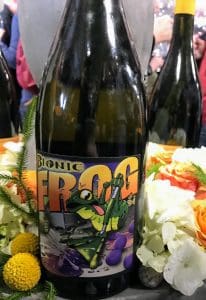
Cayuse manages to be weird in both taste and marketing. Though, IMO, their Cailloux and En Chamberlain Syrahs–with their boring orange labels–are the best.
World of Syrah Kick-off at Celebrate Walla Walla by Bean Fairbanks of Wine Beer Washington (@winebeerWA)
Part 1 of a series from the World of Syrah presentation given by writer Patrick Comiskey (@patcisco) and Master Sommelier/Master of Wine Doug Frost (@winedogboy). Nice overview of the distinction between the regions where Syrah is used as the primary grape versus more of a blending variety but my favorite quote is the one Bean highlights from Comiskey “The Syrah taste needs to be weird NOT the marketing”.
The beauty of Syrah, especially from the Rocks District in Oregon, is the funky weirdness. But gimmicky marketing is just….gimmicky marketing. If the wine can’t stand out on its own without the gimmicks than that should be a red flag.
Taste Washington Wine Month Links
March is Taste Washington Wine Month which at SpitBucket means that I’ll be nose deep in studying more about the history of the vineyards, wineries and people that make the Washington wine industry so exciting.
The women of wine are taking their rightful place (Jan 2015) by David LeClaire (@SeattleUncorked) for Seattle Dining (@SeattleDINING1)
March is also Women’s History Month and I loved this article from LeClaire highlighting kick-ass women who are not only winemakers (like Kay Simon of Chinook and Cheryl Barber-Jones of Chateau Ste. Michelle) but also sommeliers, writers (Braiden Rex-Johnson of Northwest Wining and Dining), chefs, and educators (Joan Davenport of WSU and DavenLore Winery).
Purple Gold: The influence of Husky alums can be tasted throughout the Northwest wine industry (December 2012) by David Volk for the Columns alumni magazine of the University of Washington.
I stumbled across this link while researching for the The Mastery of Bob Betz post. Every Apple Cup, I want to do a tasting of Husky wines vs Coug wines but, while it is easy to find wines made by WSU grads, until I came across this link I didn’t have an easy resource for wines with UW connections.
Washington’s great vineyards: Upland Vineyard (August 2013) by Andy Perdue (@GreatNWWine) for Great Northwest Wine.
Inspired by Peter Blecha’s essay on the history of Associated Vintners that I highlighted in my 3/3/18 Geek Notes, I wanted to research more about the role that William B. Bridgman played in the history of Washington wine.
That research brought me to Perdue’s article on the history of Upland Vineyard that Bridgman first planted in 1917 with Vitis vinifera varieties like Zinfandel and Sauvignon blanc. Today the vineyard is owned by the Newhouse family who continue to farm old blocks of Cabernet Sauvignon, Chenin blanc, Merlot and Riesling that were planted in the 1970s. There is also a block of old vine Black Muscat that the date of planting is not quite known but it is possible that these vines are approaching the century mark.

